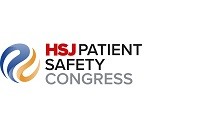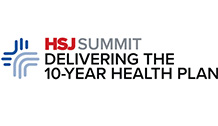Five first-hand stories told by NHS staff illustrate how clinicians have turned data into insight and action to make informed and timely decisions
In healthcare, the effective use of data has long been recognised as crucial to improving patient outcomes. But despite the vast amounts of data collected daily, how much of it translates into actionable insights that can drive meaningful change? This question is particularly relevant in mental health settings, where a lack of advanced technology contributes to the fact that “of the data that is collected, quality and completeness are often poor” (The King’s Fund, 2024).
Provided by
Even when high-quality data is available, on its own, it is just numbers. Staff need to know how to interpret, triangulate, and apply the data effectively, which can require creativity and thinking outside the box.
Here, we use contactless patient monitoring technology as a case study, exploring five ways clinicians have made smart use of the data it provides. The stories are told first-hand by NHS staff, with patient names changed to protect anonymity. They demonstrate how clinicians have turned data into insight and action to make informed and timely decisions that enhance patient care.
Avoiding medical emergencies
“I was doing my observation round and took Steve’s vital signs with the platform. I could see that his breathing rate was 33 bpm, so we immediately went to check on him in person. Steve’s sats were very low, so I gave him oxygen and contacted the on-call doctor. His oxygen saturation rose to normal levels, but we continued to monitor him more closely. When his sats dropped again, we called for an ambulance and escorted him to A&E to ensure he could get appropriate care. I feel relieved to have caught it early.”
Preventing falls
“Dawn sleeps on an airflow mattress to prevent bedsores and needs assistance when getting out of bed. I check her every 15 minutes to confirm she’s fine, but in the meantime, anything can happen. Dawn relies on us to help her use the bathroom and to get dressed and so we need to be aware as soon as she tries to get up. At around midnight one night, minutes after I had been in to check on Dawn, the platform alerted us that she was getting out of bed. I went straight to her room and assisted her with using the bathroom.”
Spotting health issues early
“Paul finds it difficult to communicate. We introduced reviewing activity reports into our team meetings. We noticed that he had been into his bathroom over 30 times overnight, and only a handful of these had been observed. We suspected that Paul had a urinary tract infection. We collected a urine sample for testing, which came back positive, so we started treatment immediately. Having the objective data was brilliant because we quickly identified a change in his behaviour and started treatment much sooner than we would have.”
Reducing sleep disturbance
“Lina was initially monitored using in-person observations at night but was disturbed by the constant presence of, in her words, a stranger. Even the act of intermittently checking Lina by opening the door hatch was causing her to sleep poorly. We took Lina off one-to-one observations and were able to give her uninterrupted sleep whilst remotely checking her pulse and respiratory rates every 15 minutes to manage her safety risk. Lina felt a greater sense of privacy and that she was better able to sleep at night. We saw a positive change in Lina too; her mood began to improve, and we saw increased interactions during the day.”
Making informed discharge decisions
“All the clinical parameters we get from this technology feed into our overall discharge planning. I don’t discharge my patients unless I’m convinced that they are having a good amount of rest without the aid of any sedatives or Z-drugs. And in terms of the activities, if I’m seeing that the patient is staying in the room and not really engaging, I think I would be less inclined to discharge them.”
As the NHS embraces digital transformation, it’s likely that the integration of high-quality data and its skilful use will become the norm and that data-driven practices will play a pivotal role in delivering effective care to every patient.

























